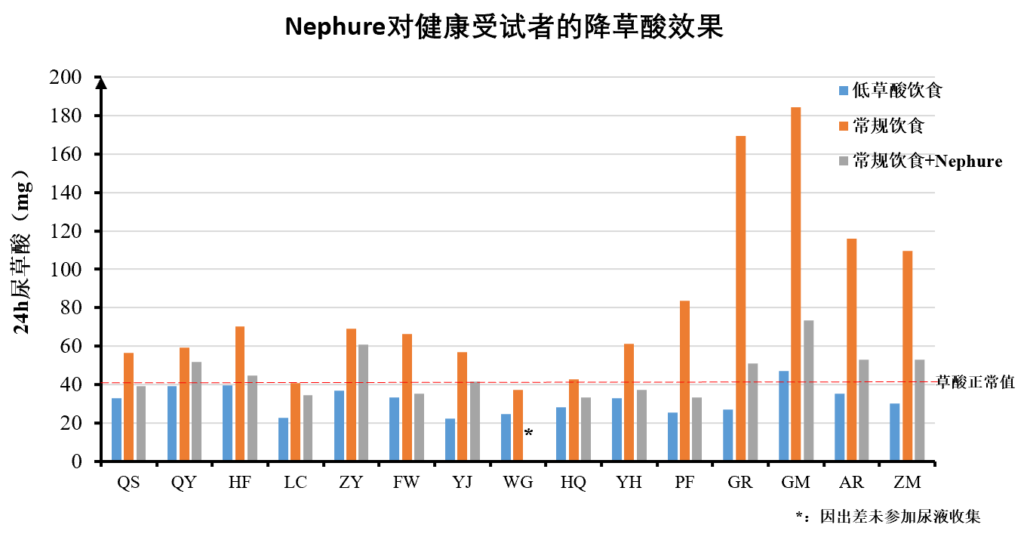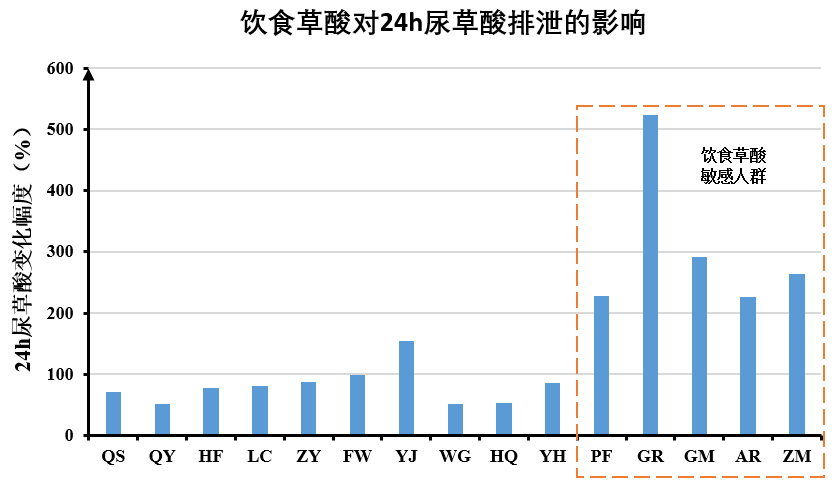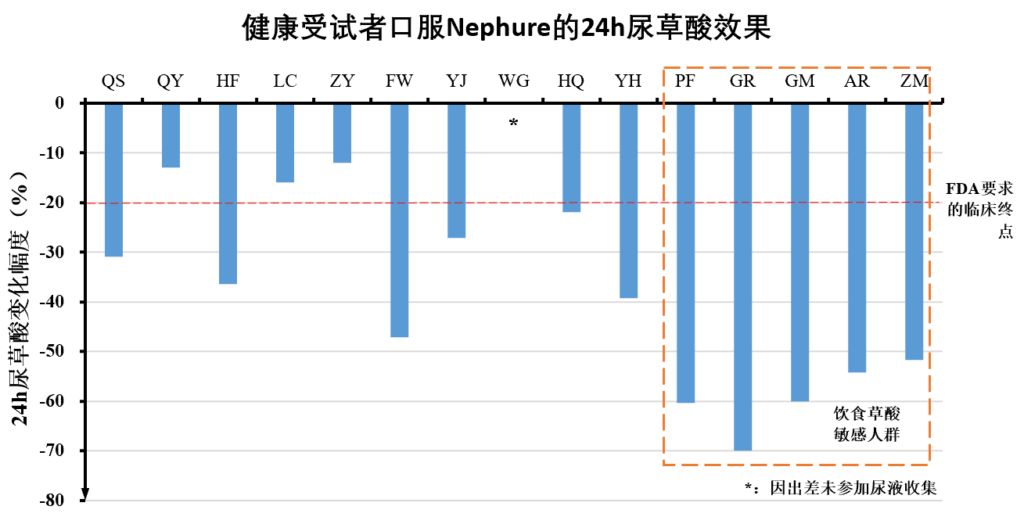Background
Secondary hyperoxaluria is a metabolic disorder caused by excessive absorption of dietary oxalate. The sensitivity to oxalate in food is crucial for diagnosing this condition. A food challenge test, similar to the gold standard oral glucose tolerance test used in diagnosing type 2 diabetes, is commonly used. Short-term (1-2 day) dietary challenges with oxalate or glucose are safe and do not cause diseases like calcium oxalate stones or diabetes.
Study Design
This study aimed to evaluate the sensitivity of healthy individuals to dietary oxalate by measuring 24-hour urinary oxalate excretion under normal and strict low-oxalate diets.
Subjects: Healthy volunteers from the company, including the CEO, were recruited. They were informed about the study’s purpose, product details, and precautions, such as maintaining stable diet and作息 (avoiding剧烈 changes in activity). Any deviations during the test were to be reported.
Diets: Normal diet (300–500 mg oxalate/day) and strict low-oxalate diet (<50 mg oxalate/day).
Duration: 3 days per test phase (Monday to Wednesday). Monday was for dietary transition, and 24-hour urine was collected on Tuesday and Wednesday into bottles with pre-added hydrochloric acid. Urine volume was recorded, and oxalate and creatinine levels were measured.
Results
Dietary Impact: All subjects showed a significant increase (>50%) in 24-hour urinary oxalate excretion on the normal diet compared to the low-oxalate diet. Five subjects (33%) had an increase >200%, identifying them as oxalate-sensitive (Figure 2).
Nephure Enzyme Efficacy: After taking Nephure enzyme (5000 U per dose, three times daily), all 14 subjects showed reduced 24-hour urinary oxalate. Eleven (78.6%) had a reduction >20% (meeting the FDA clinical endpoint), nine (62.3%) had a reduction >30%, and all five oxalate-sensitive subjects had a reduction >50% (Figure 3).
Analysis
Secondary hyperoxaluria is characterized by excessive absorption of dietary oxalate. In this study, five of 14 subjects (36%) were identified as oxalate-sensitive, all under 30 years old. Despite the small sample size, this suggests a potentially high prevalence of oxalate-sensitive individuals at risk for calcium oxalate stones, and highlights the condition’s early onset. These subjects, closely resembling hyperoxaluria patients, showed a urinary oxalate reduction >50% with Nephure, surpassing the FDA’s 20% requirement, indicating significant clinical potential.
Table 1:Urinary Oxalate Excretion in Healthy Subjects Under Different Diets and After Nephure Enzyme Intake (mg/day)
| Strict Low-Oxalate Diet | Regular Diet | Regular Diet with Nephure Enzyme | ||||
| Name | Oxalate(mg/day) | Creatinine(mg/day) | Oxalate(mg/day) | Creatinine(mg/day) | Oxalate(mg/day) | Creatinine(mg/day) |
| QS | 32.95 | 1022.12 | 56.49 | 1057.08 | 39.04 | 1103.26 |
| QY | 39.31 | 1412.52 | 59.35 | 1229.64 | 51.68 | 1250.65 |
| HF | 39.6 | 1819.36 | 70.2 | 1804.17 | 44.63 | 1624.24 |
| LC | 22.52 | 974.26 | 40.91 | 866.3 | 34.41 | 993.44 |
| ZY | 36.98 | 1408.72 | 69.23 | 1420.51 | 60.95 | 1460.74 |
| FW | 33.32 | 1382.88 | 66.49 | 1170.63 | 35.13 | 717.54 |
| YJ | 22.43 | 938.44 | 56.99 | 870.62 | 41.51 | 960.72 |
| WG | 24.66 | 1491.61 | 37.18 | 1416.74 | * | * |
| HQ | 28.05 | 1067.98 | 42.79 | 888.63 | 33.41 | 930.13 |
| YH | 32.97 | 757.4 | 61.36 | 766.16 | 37.23 | 748.8 |
| PF | 25.49 | 849.05 | 83.78 | 836.49 | 33.21 | 746.27 |
| GR | 27.19 | 1503.57 | 169.46 | 1429.63 | 50.91 | 1351.56 |
| GM | 47.01 | 1559.84 | 184.24 | 1577.81 | 73.48 | 1269.82 |
| AR | 35.43 | 1539.46 | 115.81 | 1321.79 | 53.01 | 1655.58 |
| ZM | 30.07 | 1431.76 | 109.59 | 1478.19 | 52.95 | 1301.63 |
Note: *: Absent due to business trip; Subjects marked in red font are dietary oxalate – sensitive subjects.

Figure 1: Urinary Oxalate Excretion in Healthy Subjects Under Different Diets and After Nephure Enzyme Intake

Figure 2: Impact of Different Diets on Urinary Oxalate Increase in Healthy Subjects

Figure 3: Effect of Oral Administration of TRA16 Enzyme on Urinary Oxalate Reduction in Healthy Subjects on a Regular Diet

No comment yet, add your voice below!